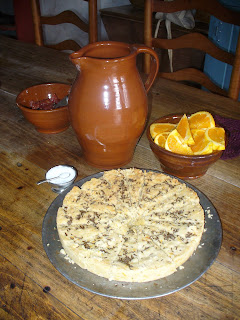Irish (Gaeilge) is very different from English, there are only 18 letters to work
with and yet the letters can make many sounds. The sounds even differ
from county to county, confusing! Irish started to decline in Ireland during the 1800s. In the late 1800s, the British stopped teaching Irish in schools in Ireland in an attempt to make the Irish more British. Irish during this time was typically used by only the poor who were more likely to emigrate from Ireland, leaving very few speakers in Ireland.
I found this writing style in an Irish primer published in the 1840s. I thought it was very pretty and decided to map it out in case someone wanted to use it for Christmas cards. Sorry, the second chart is a little hard to read, my printer is broken. English can be written using Irish letters with a little bit of imagination, for example, Andrew has to be written as "Andriu," and Mary as "Mari" or "Muire." It's a very pretty writing style it is readable to us but is still a little ancient looking.
 Nollaig Shona Duit (pronounced "No- lihg HO- nah ditch") roughly translates as "Happy Christmas." If you want to say "Happy Christmas" to more than one person it would be Nollaig Shona Daoibh (pronounced "No-lihg HO-nah dih-ve.)
Nollaig Shona Duit (pronounced "No- lihg HO- nah ditch") roughly translates as "Happy Christmas." If you want to say "Happy Christmas" to more than one person it would be Nollaig Shona Daoibh (pronounced "No-lihg HO-nah dih-ve.)*Note: Excerpt from "A Primer of the Irish Language" from the College of St. Columba, published in 1845.








